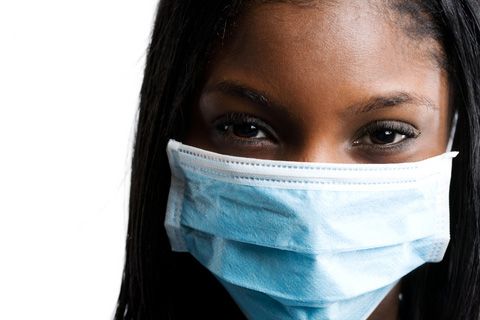
Rare Diseases Obscured by Shadows of 'Popular' Ills: Op-Ed

Laurie Edwards, lecturer in health and science writing at Northeastern University and author of In the Kingdom of the Sick: A Social History of Chronic Illness in America, contributed this article to LiveScience's Expert Voices: Op-Ed & Insights.
After a lifetime of infections, hospitalizations and surgeries, a set of lab results changed everything for me. When I was 23, biopsies of my cilia — the tiny structures that line the respiratory tract — confirmed that I had a genetic respiratory disease called primary ciliary dyskinesia, or PCD. In patients with PCD, the cilia don't beat properly, so clearing secretions is more difficult and infections and decreased oxygenation are common.
Haven't heard of PCD? That's no surprise; even when I'm in the hospital, I sometimes have to both spell and define it for health care professionals who don't see it often, if ever. About 400 patients have been correctly diagnosed with PCD, though an estimated 25,000 Americans are suspected to have it.
Getting the correct diagnosis meant my label finally reflected my actual experiences of illness. Without proper treatment, the more advanced my disease became, and the more disruptive my symptoms were. While the disease-specific details may differ, long diagnostic journeys are an unfortunate but inevitable reality for rare disease patients. Research suggests we wait an average of seven years to receive diagnoses. [The 9 Most Bizarre Medical Conditions]
All told, nearly 7,000 rare diseases affect some 30 million Americans, and eighty percent of them are genetic. Rare, or orphan, diseases are those that affect fewer than 200,000 patients, so there are many of us spread out across relatively small population pools. If doctors and nurses don't always know what I have and what it means, you can imagine the blank stares I get in public, or the sideways glances when people hear my "productive" cough.
Our culture celebrates cause-related marketing of popular diseases through charity events, national awareness months, and the purchasing of consumer products. Rare disease patients are simply not going to see the type of corporate sponsorships and marketing in the name of awareness and research for cures that patients with more common conditions receive.
We do have some tools at our disposal, however. This spring marks the 13th anniversary of the Orphan Drug Act (ODA), legislation that provides necessary financial incentives for companies developing treatments for rare disease populations. Consider this: the National Organization for Rare Disorders (NORD) reports that in the decade prior to the ODA's passage, only 10 drugs were developed. In the thirty years since, the FDA has approved 400 drugs for patient use, and an estimated 2,700 drugs are in the research pipeline.
Sign up for the Live Science daily newsletter now
Get the world’s most fascinating discoveries delivered straight to your inbox.
In 2009, the National Institutes of Health (NIH) launched its own integrated drug-development pipeline named Therapeutics for Rare and Neglected Diseases (TRND). This collaborative program connects NIH researchers, pharmaceutical and biotech companies, and nonprofit organizations and "bridges the gap that often exists between a basic research discovery and the testing of new drugs in humans."
Yet much work remains. The majority of rare diseases still do not have treatments; according to some industry estimates, less than 5 percent have FDA-approved therapies. Many existing therapies are expensive, and healthcare coverage can be more difficult to receive given the lack of standard guidelines on rare and poorly understood diseases.
Of course, patients can only access whatever treatments exist if they are appropriately diagnosed in the first place. Diagnosis does more than validate the experiences of patients. It confers membership to a community of patients and advocates who are working to improve diagnoses, therapies and, hopefully, find curative treatments.
Patients have utilized the Internet and social media platforms to share information on participating in clinical trials, advocate for increased funding and build momentum. From crowd-sourced funding for rare-disease research projects to companies like Rare Genomics, a nonprofit that collaborates with scientists to give patients with rare diseases access to genome sequencing and helps them raise funds for research, there is variety in this momentum. Considering that most rare diseases are genetic, this type of information could prove of incredible valuable.
Now that I know I have PCD, I have preventive daily chest physiotherapy to help clear my lungs and a more effective antibiotic regimen. I spend less time in the hospital, and more time living a more productive life. Without the technology to study cilia, I might still remain a medical puzzle. There is some exciting research underway to develop a genetic test-panel for PCD, and I can't help but think of the thousands of potential PCD patients who could benefit from it.
Focused collaboration between patients, nonprofits, and researchers — collaboration augmented by the ODA and other programs — will give us more of the answers we need. For patients who live outside the reach of mainstream fundraising and awareness, this collaboration is empowering.
The views expressed are those of the author and do not necessarily reflect the views of the publisher.












